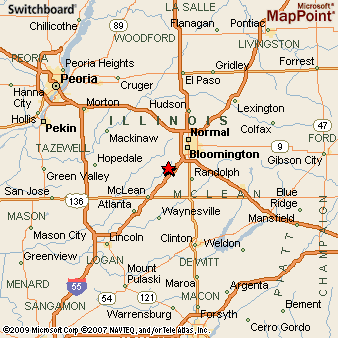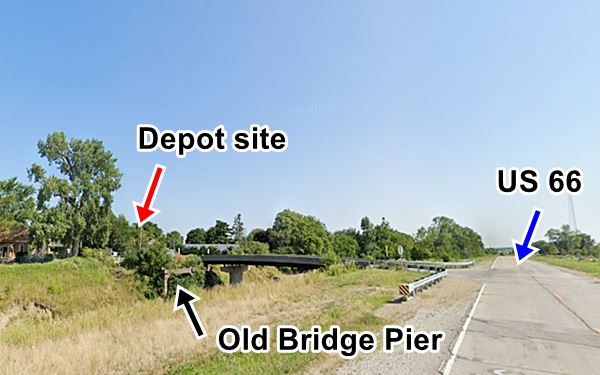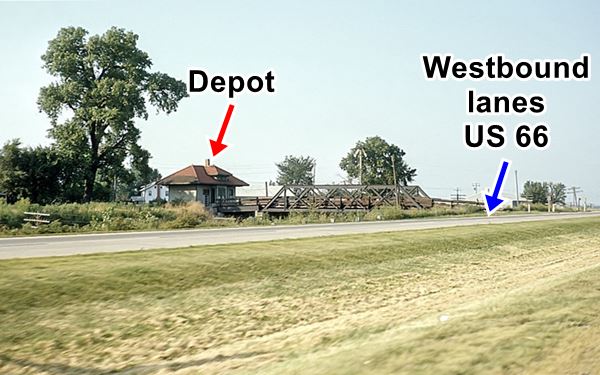
Shirley, Illinois: Where the Cornfields Whisper and Time Stands Still
Dust motes dance in the late afternoon sun, catching the light as they drift through the air above a quiet stretch of asphalt. Here, the loudest sound is often the rustle of corn leaves in the summer breeze or the distant rumble of a freight train – a reminder of the iron horse that first breathed life into this small corner of Illinois. This is Shirley, Illinois, a place not found on many modern maps, a blink-and-you’ll-miss-it hamlet in McLean County, where the rhythm of life is dictated by the seasons and the land.
Shirley isn’t a bustling city or a quaint tourist destination. It’s a testament to a different kind of American story, one etched into the vast agricultural tapestry of the Midwest. It’s a community, or perhaps more accurately, a collection of homes and a shared history, that speaks volumes through its very quietude. For those who seek the heart of rural America, unvarnished and unhurried, Shirley offers a profound, if subtle, narrative.
The Genesis of a Hamlet: From Rail to Retreat

Like countless Midwestern hamlets, Shirley owes its genesis to the iron horse. In the mid-19th century, as railroads began to snake their way across the burgeoning prairie, new settlements sprang up along their routes, serving as vital hubs for farmers to ship their produce and receive supplies. Shirley was platted in 1869, named after a railway official – a common practice of the era. The Chicago & Alton Railroad was its lifeline, connecting it to larger markets and the wider world.
For a time, Shirley thrived. It boasted a post office, a general store, a blacksmith, and perhaps a church or two. Farmers from the surrounding fertile lands brought their corn, soybeans, and livestock to the grain elevator, a towering sentinel that still stands today, albeit with a more subdued hum. Children attended a local schoolhouse, and community gatherings were the bedrock of social life. It was a self-sufficient ecosystem, a microcosm of American ingenuity and perseverance.
"My grandmother used to tell stories about Shirley being quite the happening place," recounts Mary Beth Johnson, a spry octogenarian whose family roots in McLean County stretch back generations. "There was always someone coming or going, trains rumbling through, the store buzzing with gossip. It wasn’t Chicago, but it was our town." Johnson, who now lives in nearby Bloomington but often drives through Shirley, speaks with a wistful smile. "It had a pulse then, a real beat."
However, the tide of progress, while initially bringing prosperity, eventually began to recede from places like Shirley. The advent of the automobile in the early 20th century, followed by improved roads and the consolidation of services, meant that residents no longer needed to rely solely on their immediate surroundings. Larger towns like Bloomington-Normal, with their wider array of shops, schools, and amenities, began to draw people away. Farms grew larger, requiring fewer hands. The post office closed, then the general store. The school consolidated. Slowly, Shirley began its quiet transformation from a bustling rail stop to a residential enclave.
A Present Defined by Quiet Resilience
Today, Shirley is an unincorporated community, meaning it lacks its own municipal government, relying instead on McLean County for services. Census data, though sparse for such a tiny, unincorporated locale, suggests a population numbering in the low dozens, a stark contrast to its more vibrant past. The median age is likely higher than the state average, reflecting a demographic trend of younger generations seeking opportunities elsewhere.
What remains is a collection of well-maintained homes, some historic, others more modern, nestled amidst sprawling fields of corn and soybeans. The towering grain elevator, though perhaps not as active as in its heyday, still dominates the skyline, a stoic monument to the land’s enduring bounty. A simple, well-kept church might stand as a focal point, its bell tower a silent sentinel against the prairie sky, its weekly services a thread connecting the community.
"Life here is different," says Thomas Miller, a farmer who has worked the land around Shirley for over forty years. His voice is weathered, like his hands, and carries the cadence of the rural Midwest. "It’s slower. You know your neighbors. You help them out when they need it, and they do the same for you. There’s no fancy coffee shop, no big box stores. Just the land, the sky, and each other." Miller gestures broadly at the fields stretching to the horizon. "This is what matters here. The work, the harvest. It’s a good life, a simple life."

The absence of commercial enterprises isn’t a sign of desolation but rather a reflection of modern rural living. Residents drive to Bloomington-Normal, just a short distance away, for groceries, medical appointments, and entertainment. Shirley is, in essence, a bedroom community for the agricultural workers and a few commuters who prefer the tranquility of the countryside to the suburban sprawl.
The Enduring Spirit: Community and Connection
Despite its small size and lack of formal institutions, a strong sense of community persists in Shirley. It’s a community forged not through town meetings and municipal initiatives, but through shared experiences, generational ties, and the unspoken understanding that binds neighbors together. It’s in the wave exchanged between passing cars, the impromptu chats over garden fences, and the collective effort when a barn needs mending or a storm has passed.
"We might not have a town square, but we have our connections," explains Sarah Chen, who moved to Shirley five years ago seeking a quieter life after retiring from a teaching career in Chicago. "There’s an annual potluck, a holiday light display, people dropping off fresh produce from their gardens. It’s not advertised; it just happens. You feel it. You feel like you belong." Chen appreciates the clear night skies, the quiet evenings, and the genuine warmth of her neighbors. "It’s a step back in time, in the best possible way."
The very obscurity of Shirley is, for its residents, part of its charm. It’s a place where the past isn’t just remembered; it’s lived. The old farmhouses, with their weathered siding and broad porches, tell stories of generations of families. The quiet roads invite contemplation, and the vast open spaces offer a sense of freedom rarely found in more populated areas.
Shirley as a Microcosm of Rural America
Shirley, Illinois, is more than just a dot on the map; it’s a microcosm of a broader American story – the ongoing narrative of rural towns facing the challenges of modernization, depopulation, and economic shifts. It embodies the struggle to maintain identity and community in an increasingly interconnected and urbanized world.
The facts about Shirley are not found in grand historical markers or booming economic reports, but in the subtle details: the meticulously tended gardens, the well-maintained properties, the enduring presence of the grain elevator. It’s a place that asks you to slow down, to observe, and to listen to the whispers of the cornfields and the echoes of a past that continues to shape its present.
While the "Shirley" of the 19th century, with its bustling general store and active rail yard, may exist only in memory, the spirit of the place endures. It’s a spirit of resilience, of connection to the land, and of a quiet determination to maintain a way of life that values community over commerce, and tranquility over constant motion.
In a world that often celebrates the fast, the loud, and the ever-expanding, Shirley, Illinois, stands as a gentle, yet powerful, reminder of the enduring beauty and profound importance of the small, the quiet, and the truly connected. It’s a place where time, perhaps, doesn’t stand still, but moves at a pace that allows one to truly appreciate the simple, profound rhythms of life. And in that, Shirley offers a unique and invaluable lesson for us all.


